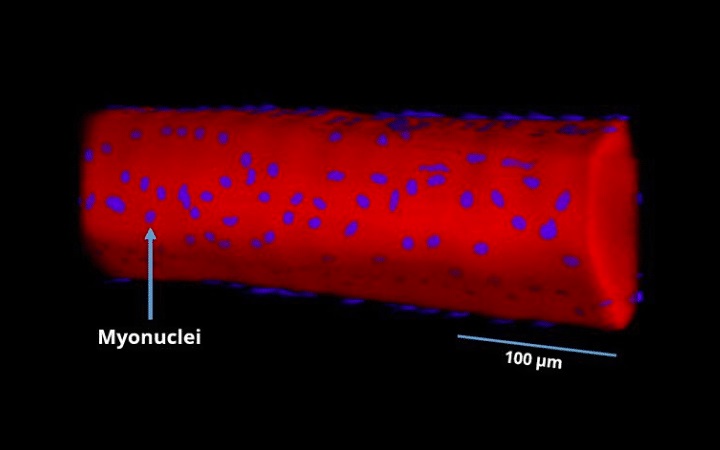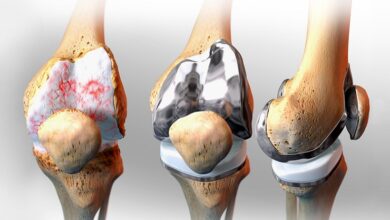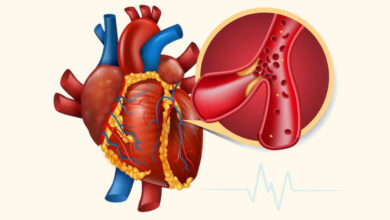
Muscle memory is a phenomenon that plays a role in our daily lives in addition to exercise. With muscle memory, we can stay physically strong and perform motor skills without thinking. Skills maintenance can continue forever if we do not suffer from illness and neurological or physical problems. In the following, we will learn more about muscle memory, its types and the mechanisms that cause it.
What is muscle memory?
Muscle memory helps you remember how to ride a bike, play the piano, or hit a goal. Muscle memory is used in various physical activities, from playing an instrument to sports. Although we have to practice a movement many times to form muscle memory, this modification does not mean that the muscles themselves can remember the movements; this memory is created in the central nervous system. This explains why many of us can retain skills we learned in childhood, even if we last used them years ago.
Of course, muscle memory doesn’t just involve physical skills and movements; it can also help us in the gym, especially if we want to get back into shape after a period of not training.
Types of muscle memory
In general, there are 2 types of muscle memory, one related to performing physical tasks automatically without thinking. The other relates to our ability to return to our previous form and muscle strength after not exercising for a while.
1. Ability to automate tasks
Repeating a movement or activity can make it automatic without thinking about it. Athletes often practice a movement or stroke to perform it quickly and correctly. Remembering things like riding a bike, throwing a baseball, or serving in a tennis game are examples of this type of muscle memory. These unforgettable skills come from the motor learning process, and we use motor memory to retain them. When we learn how to perform these movements well and automatically without conscious thought, their information is encoded in our brain, and we include the essential coordination we have learned in the future.
Muscle memory and learning motor skills allow us to master complex skills such as playing an instrument and everyday tasks such as typing or riding a bicycle. Muscle memory means we no longer have to learn to do something from scratch. When we return to a skill after a long break, our bodies still remember how to do it.
In this type of muscle memory, neural pathways are formed that make the brain better communicate with the muscles. This is done through a process called myelination, in which the myelin sheath becomes thicker, and its efficiency in conducting electrical signals in the body and brain increases. (Myelin is the protective layer that covers nerve fibres.)
Performing an action repeatedly activates neurons in certain parts of the brain, especially the cerebellum and basal ganglia, and creates a new neural pathway between the central nervous system and the muscles involved in that action. After building muscle memory, you can perform that activity without conscious thought.
According to research, myelination is strengthened by repeated physical activity. Even relatively short periods of exercise may lead to significant changes in the brain and body and help build muscle memory. Of course, you should note that every repetition does not lead to the creation of muscle memory. Muscle memory is created when you engage in conscious and deliberate practice, performing specific movements and activities with focused attention and effort.
2. Return to previous fitness and muscle strength
This type of muscle memory is for when muscles have been trained before. After rest and disuse, they gain strength and size much faster than muscles never trained. The second type of muscle memory is related to our ability to get fit. At first, the exercises are complex, and it will take some time to be able to lift heavier weights. But returning to the weights we used to raise will be much easier if we stay away from training for a while and resume training after a few months. Muscle memory includes all exercises and makes it easier to regain lost muscle mass and strength.
Women participating in the research, even after more than 6 months of rest, were able to regain the strength and size of the muscles before the rest period with 6 weeks of retraining, while at the beginning, they were able to achieve the desired shape and form with 20 weeks of strength training. In another study, men and women who trained for 10 weeks and rested for 20 weeks were slightly more robust and muscular after 5 weeks of retraining than after 10 weeks of initial training.
For a long time, it was believed that if we did not use our muscles, the newly created muscle cells would be lost, but research has proven that this is not the case. According to this research, myonuclei (nuclei inside muscle fibres) shrink and do not disappear when we are inactive. Our body uses myonuclei to store its capacity for muscle fitness and strength. This is why we return to our previous fitness and strength more quickly when we return to training. Of course, how long it takes to reach their previous fitness and form after rest and not exercising is different for everyone.
The amount of muscle recovery depends on the amount of immobility during the period of rest and non-training. For example, suppose you have been in bed for months. In that case, returning to your previous shape and fitness will take longer than if you had stopped resistance training but continued with your normal daily activities.
How does muscle memory make us build muscle again?
You damage muscle fibres when you train your muscles with strength training and weight lifting. The body also restores and strengthens these muscle fibres with hypertrophy. When you don’t exercise or have a long rest period, your muscles lose strength through muscle atrophy. But the myonuclei remain in the muscle tissues. When you train again, they participate in protein synthesis and help your muscles grow again and regain their strength. As a result, training the muscles again leads to muscle building faster than when we try to teach the muscles for the first time.
An image of a human muscle fibre with its myonuclei (blue dots)
According to research, the changes caused by exercises remain in the muscles themselves. For example, an experiment on mice found that after muscle cell nuclei multiply in response to heavy exercise, these extra nuclei do not disappear during subsequent periods of inactivity. They are stored in distinct muscle fibres, waiting to be reactivated by retraining.
According to sports physiologist Fabio Comana, muscle fibres are slightly damaged when you exercise. This is part of the process of getting stronger. Dormant and inactive cells called satellite cells go to the injured site and insert more nuclei into the muscle fibres, which causes muscle growth. Even if you don’t exercise long, the cores stay in place and accelerate the return to muscle growth when you resume training.
Another area of research on muscle memory is related to changes in how genes function in response to your environment and behaviour. In muscle cells, genes are turned on and off in response to exercise to make specific cell proteins, ultimately facilitating muscle growth and strength. According to this theory, creating long-term changes in these genes can be the factor that stimulates muscle memory.
How fast you regain your previous fitness and muscle strength depends on how fit and strong you were, to begin with, how long you’ve been inactive, how old you are, and how long you’ve been training to build your muscle memory. The more strength and fitness you have, and the longer you’ve been building muscle memory, the better off you’ll be.
Benefits of muscle memory for athletes
Muscle memory allows athletes to perform motor actions faster and more accurately without thinking about how to achieve them. For example, muscle memory will enable boxers and martial artists to move quickly to avoid an opponent’s blow without needing extra time to consciously react. Muscle memory also allows dancers and gymnasts to perform spins and other physical activities without losing balance.
In addition, muscle memory allows athletes to stop training and competing for a while and rest. During this time, their muscles and nerve pathways weaken due to disuse. Still, when they resume training, they can return to their previous athletic state and gradually regain their muscle mass without starting from scratch.
Ways to use muscle memory
Muscle memory is encouraging for those who have been away from exercise for a while because it gives them an edge over those who have never exercised. These principles apply to both resistance training and endurance training. Comana recommends using this principle in strength training to increase the weight of weights so that you do not get injured when you resume training with weights. If you do 3 sets of 10 reps each over 2 or 3 weeks, when you get to the point where you can do 2 more reps with proper form until you reach the point of failure, that’s when you increase the weight a little.
The best way to use muscle memory in aerobic exercise is to repeat the exercises. Start at a lower level than you are used to. Then, gradually increase the duration, frequency and intensity of the exercises. Challenging yourself in moderation is enough to get you back on track. Don’t try to go from 0 to 60 to progress quickly.
The better and safer method is to increase these elements by 5% every one or two weeks. If you aim 150 minutes of aerobic exercises per week, including 5 30-minute sessions, you can start with 15-20-minute sessions. The intensity of the exercises should be enough for you to talk but not sing. Then, add 5 minutes to your weekly training time to reach your previous level. Then, you can increase the intensity of the exercises.
To improve your skills in a particular sport, such as tennis, soccer or golf, focus more on using motor neurons. You can use mental imagery to send messages to neurons that light up when you want to do that movement. Watching videos of others doing that exercise is also helpful because it activates mirror neurons in the brain.
Mirror neurons fire when we perform an action or watch another person perform that action. These mirror neurons copy the behaviour of others as if they had completed it themselves.
final word
The more you exercise, the more muscle memory you will have. When you get extra myonuclei, they are stored for you, and when you start exercising again, your muscles will grow much faster. Researchers believe that muscle memory is permanent and possibly permanent. There is no age at which muscle memory stops. You may be tempted to start training at the level before your rest period immediately. Still, you should pay attention to your physical condition and gradually return to your previous training level to prevent injury.








